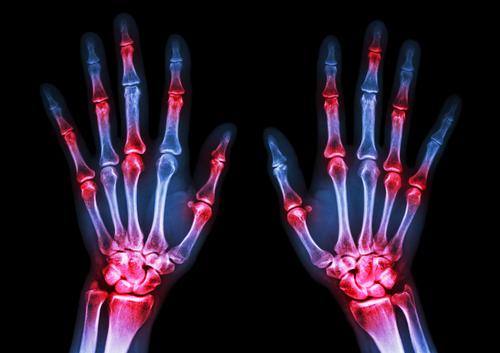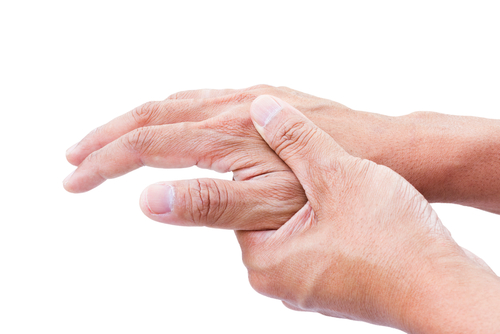Conservative Therapy for OA in the Fingers: A Literature Review
Filed under Treatments

Beasley, J., Ward, L., Knipper-Fisher, K., Hughes, K., Lunsford, D., & Leiras, C. (2018). Conservative therapeutic interventions for osteoarthritic finger joints: A systematic review. Journal of Hand Therapy, 32. 153-164.
The Skinny – The article reviews the evidence on the effectiveness of conservative treatment for those who experience osteoarthritis in fingers and in their finger joints (osteoarthritis treatment hands).
In the Weeds– Eighteen studies met the inclusion criteria. Interventions reported in the literature review included active range of motion, gentle resistive exercises, joint protection strategies, electromagnetic therapy, paraffin wax, balneotherapy, as well as DIP orthoses.
The results from the review yielded that there is high quality evidence supporting the use of electromagnetic therapy combined with hand exercises to decrease pain and increase overall function. There is moderate to high evidence for the use and wear of a DIP orthosis to decrease pain in the finger joint. Finally, it was reported that there was moderate evidence to support resistive exercises to improve overall grip strength and decrease pain for individual experiencing osteoarthritis in their hands.
Bringing it home – The authors concluded there are a variety of conservative treatments that may be utilized for those experiencing pain and stiffness from hand osteoarthritis (oa hand). Interventions supported are electromagnetic therapy with thera-ex, use of a dip orthosis for painful joints and gentle resistive hand exercises. All should be performed within a pain free range.
Overall, the article is well written and easy to follow. It was difficult to analyze studies due to lack of homogeneity among the studies. The article provides evidence as to what conservative intervention are supported in the literature as well as insight into additional options for therapists.

More To Read
Hand Therapy Marketing 101
Marketing 101 – 5 Tips for Your Therapy Clinic Confession: I hate marketing. It’s my least favorite part of my job. It is so hard to open yourself up to that much rejection but still stay positive. It feels like the professional version of blind dating, except the other person probably already has a significant…
Read MoreDoes mirror therapy work for hand therapy patients with general orthopedic conditions?
By: Maddie Mott Rostami, R. H., Arefi, A., & Tabatabaei, S. (2013). Effect of mirror therapy on hand function in patients with hand orthopaedic injuries: a randomized controlled trial. Disability and Rehabilitation, 35(19). 1647-1651. DOI: 10.3109/09638288.2012.751132 The Skinny: How does mirror therapy work? Mirror therapy (MT) is performed by placing the patient’s injured extremity into…
Read MoreHow to Improve Fine Motor Translation Skills
By: Josh MacDonald The Basics – I lay a pile of small objects on the table and an open container for the client to put them into. What object I use depends on the client’s level. We’ll get to that later. Then, they use a 2-point pincer grasp to pick up one and shift it…
Read MoreUse of Proprioception in Rotator Cuff Repair
Article Review By Brittany Day Upper Limb Active Joint Repositioning During a Multijoint Task in Participants with and without Rotator Cuff Tendinopathy and Effect of a Rehabilitation Program Pairot de Fontenay, Benoit, Mercier, Catherine, Bouyer, Laurent, Savoie, Alexandre, & Roy, Jean-Sébastien. (2019). Upper limb active joint repositioning during a multijoint task in participants with and…
Read MoreSign-up to Get Updates Straight to Your Inbox!
Sign up with us and we will send you regular blog posts on everything hand therapy, notices every time we upload new videos and tutorials, along with handout, protocols, and other useful information.






